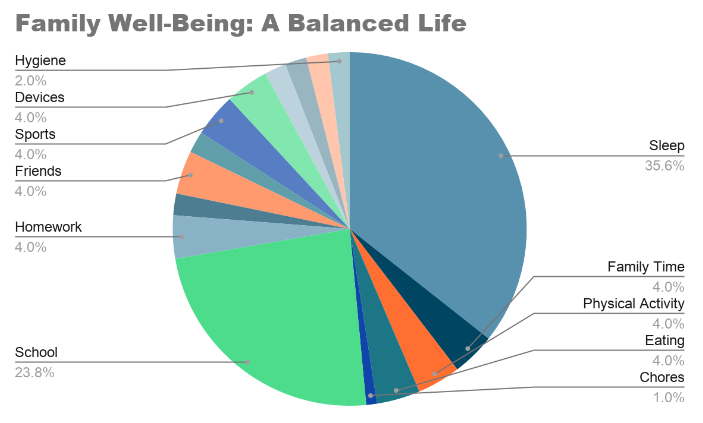
Screen Time Strategies
May 04, 2023Follow the Show
Apple Podcasts | Google Podcasts | Spotify | Everywhere else
Today I'm tackling the topic of screens, screen time limits, devices, all of it. And I am going to help you feel better about your kids’ device use. This is a master class on managing screens in your family. So grab a pen and paper and get ready.
Let’s be honest - we all love screens.
I love lots of things, like nature, my friends, my kids, my dogs. And I really like being on my phone and watching TV.
But the fact that our kids also love devices drives us crazy as parents. We know devices are fun for them, but we’re annoyed when they won’t put them down. We worry about them getting too much screen time, and we don’t like the way they act when it’s time to stop.
Why Screens Are Hard
I see a lot of parents that are really worried that their child is addicted to screens. They ask for device time frequently, and then they don’t want to stop. We use this as evidence that they’re addicted.
Parents also have conflicting feelings around screen time, which can be really confusing.
We feel compassion because they want to connect with their friends and have something to do. But then we feel guilty because we don’t know if we’re doing the right thing or how much screen time is too much.
When you’re feeling worried, frustrated, annoyed, guilty and confused, you aren’t going to make the clearest decisions.
What We All Want When it Come to Screens
When it comes to our goal for parenting with screens, I’m guessing that you want your family to feel balanced and connected to each other. You want screen time to be a part of your life, but not completely consuming your life. You don't want it to be everything your kids do.
I bet you also want there to be less fighting when you say no to screen time or when it’s time to stop.
And you also probably want to feel really clear about your rules around screens and to see that it is possible to implement them with more ease.
5 Obstacles Parents Face Around Screen Time
You judge your kid’s desire for the device
When they ask for screen time, you feel upset by their desire.
The truth is, we all love our devices, and screens are an easy way for the brain to be entertained or distracted. It helps us get rid of that uncomfortable bored feeling.
Their inability to put down the device on their own does not mean your kid is lazy, unmotivated or anything else. Video games and social media are designed to keep the viewer engaged and keep them coming back.
The pull of the device is natural.
Thinking your kid is “addicted”
This is one that I hear a lot. Not only is it not true in the vast majority of families, but this thought creates fear in you and makes the situation more emotionally charged.
If you are thinking that your kid is addicted, you're going to look for evidence of that being true.
Evidence like:
- They ask for it all the time
- They don't like to get off
- They seem physically affected by screens
- They prefer screens over being with people
- They don't know how to stop
But instead, I want you to think that the desire for devices is normal. It doesn’t mean anything has gone wrong.
Kids like things that are fun, and being on a device is fun. Wanting something doesn’t mean someone is addicted.
Your kids not being okay with being bored
When you start setting limits around screens, your kid is going to have big feelings. If your child isn't okay with being bored, it's going to be a big issue for you at the beginning because their brain does not know quite yet how to shift into something new.
When kids are bored, they feel uncomfortable. I call this the Boredom Gap.
The good news is that the more time they spend away from devices, the more comfortable they will become spending time away from devices.
Confusion around what is the right amount of screen time
This is one that you need to figure out for yourself (but I’m here to help!) What do you want balance to look like in your family?
Think about all the things happening in a 24-hour period: sleep, school, meals, homework, chores, sports, play, family time, etc.

How much is left of open or discretionary time? Do screens fit into that time?
Another approach is thinking about if your kid seems off-balance at all. If so, you can set a limit to create more time and opportunity for the things you think are most important for them.
You get to create any rule or limit that you want in your family. The more committed you are to the limit, the more you love your reasons and the more comfortable you are with your child’s big feelings, the easier it will be to set the boundaries that you want.
Not having a plan
Parents often feel like they don’t have a lot of power over their kids’ screen use. They need it for schoolwork, all their friends are online, etc. It leads to a lack of parental leadership.
Ultimately, I think we’re worried that our kids are being left out or that our kids are going to get behind.
You are strong enough to set limits and handle the discomfort that comes with it.
Step into your role as the leader of your family and make a plan, write it out and create an ideal week for you and your kids’ screen use.
How to Set Limits Around Screen Time
Until they’re through middle school, your kids are not going to be able to manage their screen use on their own. They just aren’t capable yet of setting their own boundaries and being accountable to them.
There are three steps to setting a limit around screens.
Figure out what you want
Think about your family, your week and your days.
When do you want your kids to use devices? How much time can they use it? Which devices or games can they use?
Communicate the limit
Communicate to your kids the rules and limits around screen use, using the Limit Setting Formula.
For example, “You’re welcome to watch one show as long as your chores are done first.”
You’ll also need limits around when screen time is over. Something like, “You’re welcome to use screens as long as there are no problems when it’s time to get off.”
Hold the limit
Here's what's going to happen. You’re going to tell them the limit, and they are absolutely going to do all the shenanigans that they always do when it’s time to get off the device. There is definitely going to be a problem because until now, there's been no reason for them to change their behavior.
I want you to avoid rescuing them from the consequence by reminding and nagging them to turn it off. Stand patiently.
Then, the next time it’s supposed to be device time, you say, “no screens because of what happened last time.”
They’ll promise to be good, they might blame a sibling (or you) or beg for their device.
Hold your ground. Let them respond and show compassion and connection. Let them know you understand they really want their device and that’s okay. Let them get through the Big Feeling Cycle and trust that their brain will find a solution.
You get to make the rules in your family. Be confident in your reasons, but don't feel the need to explain them to your kids. You don't need to argue or explain or justify or lecture.
It's okay if your kids don't like your limits. It's okay if they're mad at you. It's okay if they're disappointed. It's okay for your children to have negative emotion.
Stay committed to your limit. Be compassionate in that limit, and they will be able to overcome their discomfort.
You’ll Learn:
- Why our kids are so drawn to screens (and it’s not because they’re addicted)
- Ways to reframe your thoughts around screen time
- Examples of screen time limits
- How to be the leader of your family
Connect With Darlynn:
- Learn more about working with Darlynn
- Book a call with Darlynn
- Sign up for love notes and learn about The Calm Mama Club at www.calmmamacoaching.com
- Follow me on Instagram @darlynnchildress for daily tips
- Rate and review the podcast on Amazon
Ready to stop yelling?
Get the one simple tool you need to stop yelling at your kids, so you finally feel calmer and connect better.
You'll learn why you yell, how to stop yourself yelling, 40 things to do instead and scripts for what to say to your kid when you yell.

